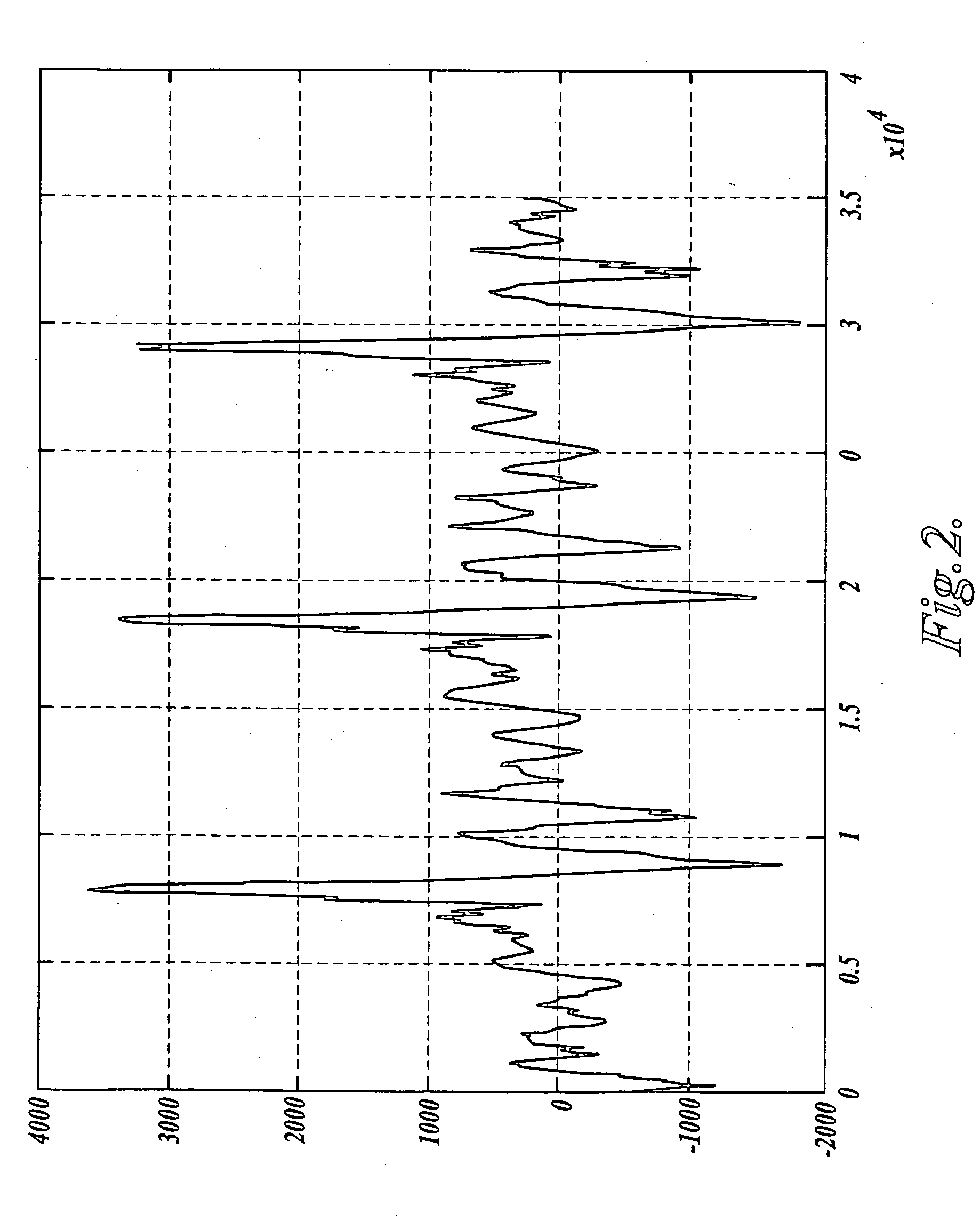Apparatus, software, and methods for cardiac pulse detection using a piezoelectric sensor
a piezoelectric sensor and apparatus technology, applied in the field of cardiac pulse detection using a piezoelectric sensor, can solve the problems of cardiac arrest, patient's heart failing to provide sufficient blood flow to support life, and it is extremely difficult for first-responding caregivers with little or no medical training to consistently and accurately
- Summary
- Abstract
- Description
- Claims
- Application Information
AI Technical Summary
Problems solved by technology
Method used
Image
Examples
Embodiment Construction
[0034] An electrocardiogram (ECG) waveform, as shown in FIG. 1, depicts the electrical activity of a patient's heart. A patient experiencing normal cardiac activity will exhibit an ECG waveform having standard identifiable features. The portion of the ECG waveform representing depolarization of the atrial muscle fibers is referred to as the “P” wave, as shown in FIG. 1. Depolarization of the ventricular muscle fibers is collectively represented by the “Q,”“R,” and “S” waves. Finally, the portion of the waveform representing repolarization of the ventricular muscle fibers is known as the “T” wave. Between heartbeats, a normal ECG waveform generally returns to an isopotential level.
[0035] The contraction and release of cardiac muscle in normal cardiac activity produces vibrations through the chest cavity that can be detected on the surface of the patient's body. Higher frequency vibrations from the opening and closing of the patient's heart valves are also detectable by equipment on ...
PUM
 Login to View More
Login to View More Abstract
Description
Claims
Application Information
 Login to View More
Login to View More - R&D
- Intellectual Property
- Life Sciences
- Materials
- Tech Scout
- Unparalleled Data Quality
- Higher Quality Content
- 60% Fewer Hallucinations
Browse by: Latest US Patents, China's latest patents, Technical Efficacy Thesaurus, Application Domain, Technology Topic, Popular Technical Reports.
© 2025 PatSnap. All rights reserved.Legal|Privacy policy|Modern Slavery Act Transparency Statement|Sitemap|About US| Contact US: help@patsnap.com



